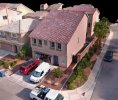Dave Pitman
Well-Known Member
Hi Paolo, I do not have an EVO yet. But, if you are intent on shooting .dng, and your workflow allows for the additional time needed for .dng image storage on the drone, you should be able to configure Exiftool to write all of the exif data from the original .jpg copies to new .jpg copies derived from edited .dngs.se il drone tramite il suo software memorizza i dati gnss sul file jpeg che viene generato insieme al file dng (es. scatto in condizioni dng + jpeg) non capisco che, avendo tutte le informazioni, non sia in grado, il software, per generare un file xmp con le stesse informazioni, già presenti, memorizzate su un file che deve essere semplicemente trasferito. Trovo questo assurdo, di facile soluzione e che ha un impatto notevole dal punto di vista operativo quando lavori in zone dove puoi andare una sola volta (ad esempio per problemi di autorizzazione) e se hai foto con ombre e luci da sistemare sono limitati nel farlo. Per quanto riguarda la qualità delle foto jpeg, attenzione a non confondere le cose. il P4rtk corre che è una bellezza, magari anche l'evo 2 rtk sarà così ma dal punto di vista del software deve mangiare ancora tanta pasta al sugo! Non voglio essere polemico ma darmi una giustificazione plausibile o dirmi che dal punto di vista informatico non è possibile, perché se lo è, come credo e anche facilmente, mi sembra assurdo non farlo. un saluto da un utente al momento, visti gli innumerevoli guai dell'evo 2 rtk, è davvero deluso. ciao
One thing I'm not certain about, and maybe Ken can comment, is if there is any actual time differential between the "capture" of the .jpg vs the .dng. I suspect that any differential is in the processing and caching and not the capture. But I am not possitive.







